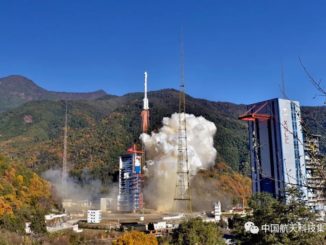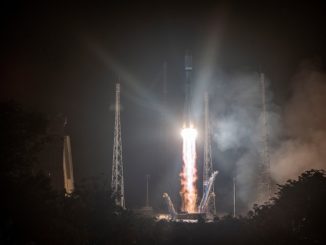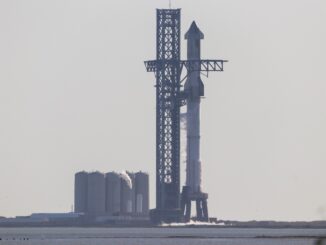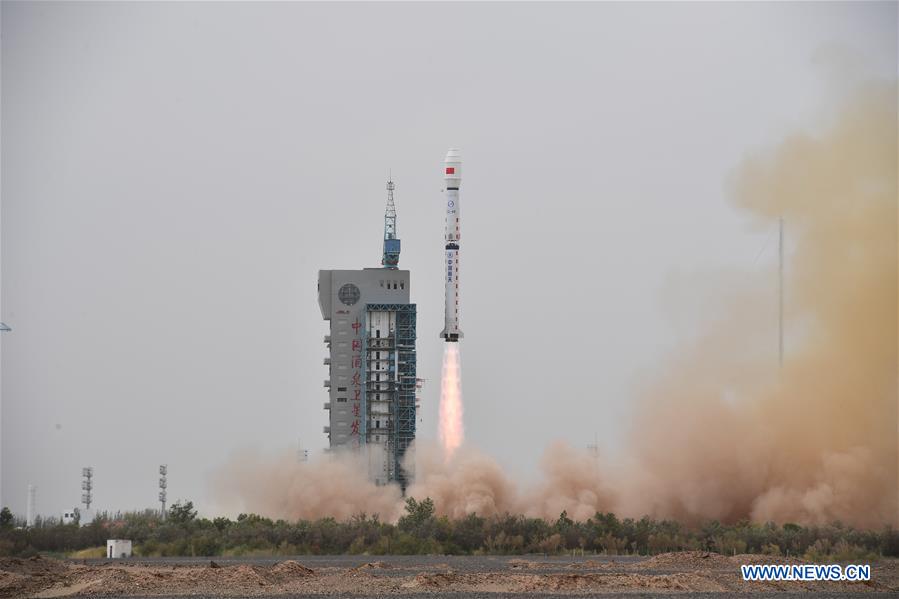
A Chinese oceanography satellite designed to measure wave height and winds launched Monday aboard a Long March 4B rocket equipped with grid fins to help control the first stage’s descent back to Earth, an improvement aimed at keeping falling boosters away from Chinese villages.
The Haiyang 2C oceanography satellite lifted off at 0540 GMT (1:40 a.m. EDT; 1:40 p.m. Beijing time) Monday from the Juiquan launch base in the Gobi Desert of northwestern China. A three-stage, liquid-fueled Long March 4B rocket carried the Haiyang 2C spacecraft into orbit.
The satellite separated from the Long March 4B’s third stage about 12 minutes after liftoff, entering an orbit approximately 580 miles (935 kilometers) above Earth at an inclination of 66 degrees to the equator.
Haiyang 2C joins another Chinese oceanography satellite — Haiyang 2B — in orbit to enable greater monitoring of the maritime environment. China’s earlier Haiyang ocean-monitoring satellites launched into polar orbits tailored for global coverage, but Chinese officials launched Haiyang 2C into a lower-inclination orbit to allow the satellite to cover territory more often.
Built by the China Academy of Space Technology, a state-owned aerospace contractor, the Haiyang 2C satellite carries a radar altimeter and microwave scatterometer to measure the height of waves and monitor maritime wind field. The spacecraft also carries a payload to track ships and a data collection system to relay measurements from ocean buoys to forecast centers and other users.
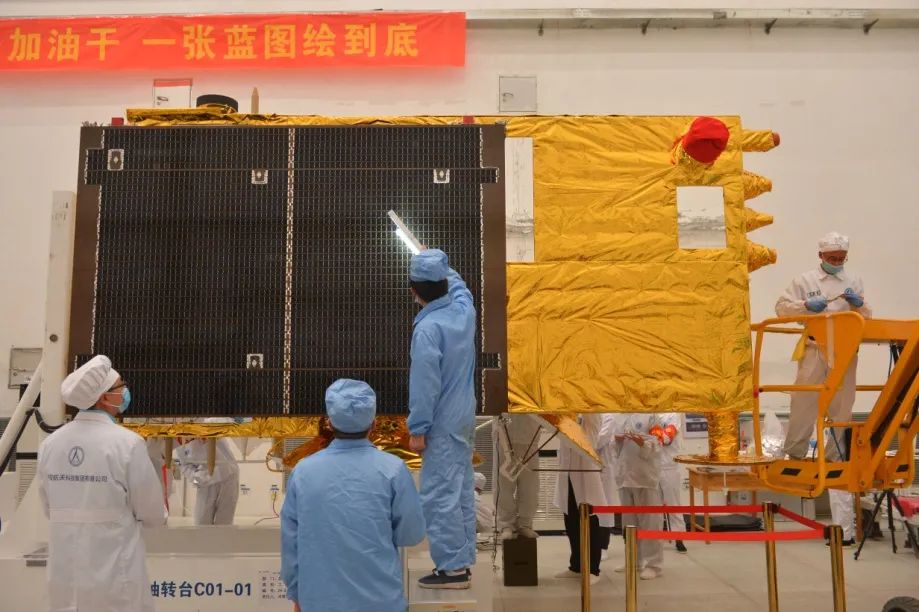
China plans to launch its next oceanography satellite, Haiyang 2D, in 2021.
The Haiyang satellite series is named for the Chinese word for “ocean.”
China operates two families of Haiyang satellites — the Haiyang 1-series and Haiyang 2-series — that carry different sets of oceanography instruments. The latest member of the Haiyang 1 family, Haiyang 1D, launched in June with imaging sensors to measure ocean color, data which officials said will help track pollution and natural ocean constituents such as chlorophyll.
Four aerodynamic fins flew on the first stage of the expendable Long March 4B rocket. Chinese officials said the fins, which have flown on some previous Long March rockets, are designed at narrowing the drop zone for the first stage after stage separation roughly two-and-a-half minutes after launch.
Most Chinese rockets launch from land-locked spaceports in the interior of the country, and their spent rocket stages fall back to the ground over land. Some Chinese boosters land uncontrolled near villages, and videos shared on Chinese social media have shown clouds of toxic propellants hovering near homes, schools, and roads.
The four grid fins are intended to give officials more certainty about where the rockets will land, according to Chinese news reports.
Email the author.
Follow Stephen Clark on Twitter: @StephenClark1.

